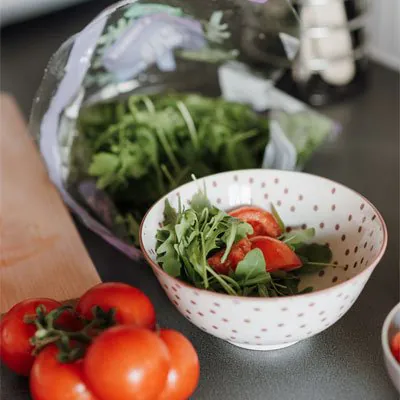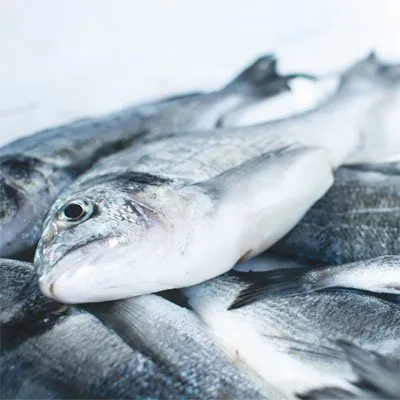Product recalls caused by pathogenic germs in food make it clear how important strict hygiene standards and controls are throughout the supply chain.
Fresh, healthy and made quickly: so-called fresh-cut salads from the bag are extremely popular convenience products. Unfortunately, the supposedly digestible mixtures often contain fewer vitamins, but even more germs. At the beginning of 2021, various large manufacturers in Switzerland recalled their products because the corn in their ready-made salads was contaminated with listeria. The problem is not limited to Switzerland – German studies, for example, also deal with the germ load of convenience food. A study of the Max Rubner Institute in Karlsruhe already confirmed in 2019 that above all ready-cut salads from the bag are microbiologically contaminated.
But how do pathogenic germs such as listeria get onto the products or into the packaging? How harmful are they to health and what do manufacturers and consumers need to know and observe about Listeria? Below we have compiled answers to some important questions about pathogens in food.
What is Listeria?
The rod-shaped bacteria Listeria monocytogenes are widespread in nature. As niche germs, they survive in environments where other microorganisms cannot survive. They require few nutrients and reproduce even at low temperatures or low oxygen levels. Listeria can be found both in the soil and on plants as well as in the animal and human intestinal tract. They get into food through the harvesting or processing of animal products, such as slaughtering or milking. Dairy products, meat and fish are particularly affected, as is convenience food – for example, sliced salad from a bag.
Why is Listeria so common on bagged salads?
Since listeria occur everywhere in nature, the salad can come into contact with the bacteria either in the field or later during or after the harvest – among other things due to contaminated water or a lack of hygiene during cooling. A major problem, for example, is irrigation with contaminated water. Farmers’ fields may be watered with treated water from sewage treatment plants during droughts. In addition to listeria, other pathogens such as salmonella or coli bacteria get onto the food in this way.
In the case of the fresh-cut products, the salad leaves are cut up during the processing for bag salads. This destroys the natural protective layer of the plants against bacteria and fungi. The escaping cell juice serves as food for microorganisms such as listeria, and the humid atmosphere in plastic bags also promotes their growth.
How dangerous is Listeria for humans?
Listeria are the cause of the infectious disease listeriosis. This is particularly dangerous for the elderly, infants and pregnant women, as well as for people with a weakened immune system. In people with normal immune systems, infection is usually mild. A listeriosis infection can cause flu-like symptoms or diarrhea. Serious courses of the disease include meningitis, blood poisoning or pneumonia – in the worst case, listeriosis can be fatal for risk groups. A listeriosis infection during pregnancy can lead to damage to the unborn child and even miscarriage.
According to the Federal Office of Public Health, there are around 80 proven cases each year of listeriosis bacteria in Switzerland. While outbreaks are rare, when they do occur they cause large numbers of deaths and hospitalizations. In the 1980s, for example, there was a severe outbreak of listeriosis in Switzerland – the bacteria were then found in a raw milk soft cheese. A total of 33 people died from eating the contaminated cheese. In 2014, 32 people fell ill with listeriosis after eating salad, and between 2018 and 2020 several cases of listeriosis and deaths were reported after Listeria were found in products from a Swiss cheese dairy in Steinerberg.
How can consumers protect themselves from Listeria?
Listeria colonize food very easily and quickly. Whether a food is contaminated cannot be seen, smelled or tasted. Salads that look fresh on the outside can also be contaminated. Therefore applies: ready-to-eat salads should only be bought from the fridge in the supermarket and eaten as soon as possible. All in all, preventive hygiene measures are also indispensable in the kitchen at home. Not only the hands, but also fruit and vegetables should be washed thoroughly before they are eaten or processed. To avoid cross-contamination, meat or fish products should always be cut on separate boards and with different knives than fruit and vegetables. Good cooling and the quick consumption of finished products also keep the risk of listeria small. However, the only reliable protection to really kill Listeria is heating. Since this is not possible with products such as ready-made salads from the bag, they must be kept cool and eaten as quickly as possible. Risk groups, however, should completely avoid cut mixed salad made of plastic packaging to be on the safe side.
What can manufacturers do to prevent Listeria in their products?
After the severe cases of listeriosis, strict hygiene measures were enacted, particularly with regard to cheese production, and regular controls were introduced. So far, these standards have not been used in the production of cut salad. The producers themselves are in the driver seat: Defined hygiene standards as well as continuous monitoring and random checks of the production and supply chains are essential for food manufacturers. Specialized laboratories such as Biolytix offer various methods to detect pathogenic germs in food. Common methods are, for example, microbiological analysis using culture medium plates or immunological (ELISA) and molecular biological (real-time PCR) test methods. The producers are obliged to have a functioning self-control concept in order to produce hygienically perfect food or to detect microbiological contamination with Listeria and Co. at an early stage.




